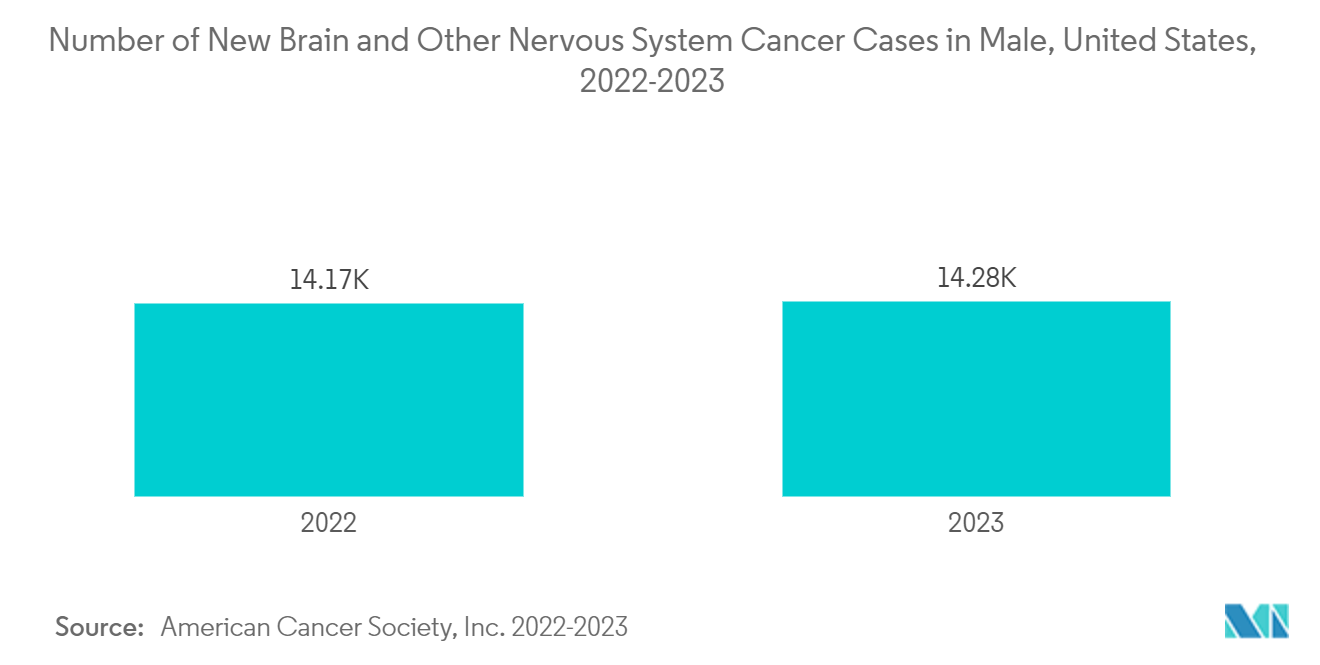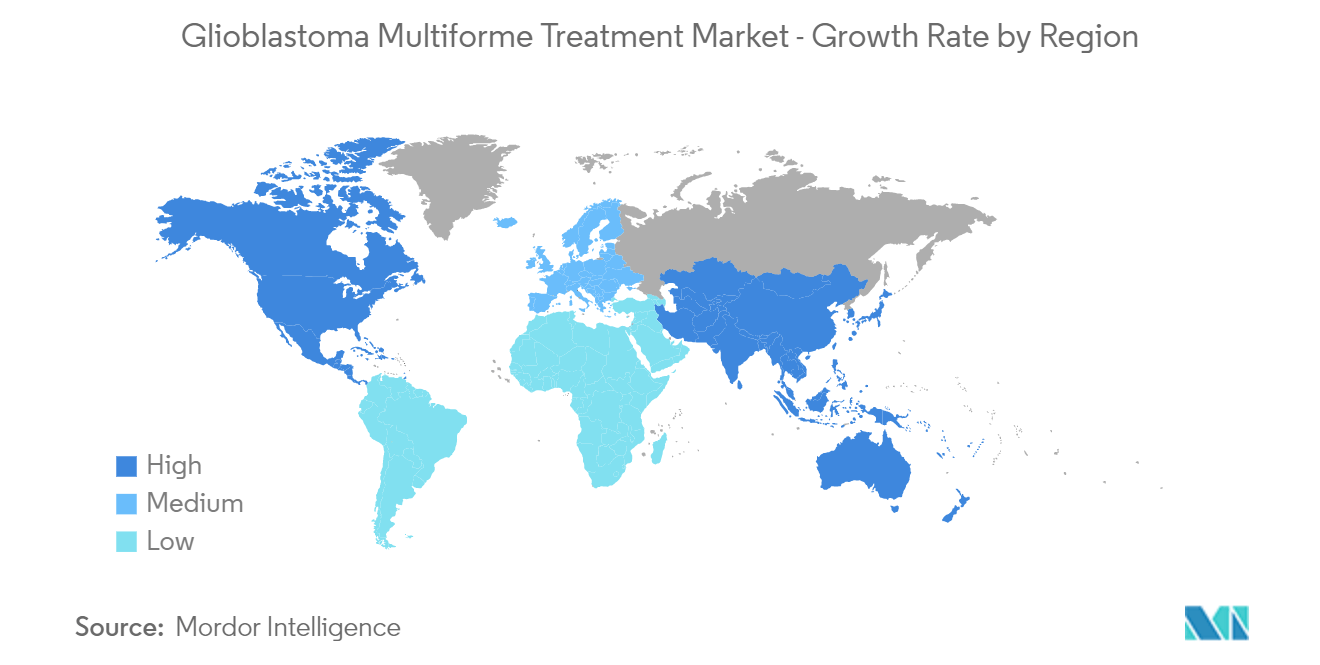Market Trends of Glioblastoma Multiforme Treatment Industry
Chemotherapy Segment is Expected to Dominate the Market Over the Forecast Period
The key factors contributing to the growth of the radiation therapy segment are the rising number of brain and other nervous system cancers and the growing preference and commercial availability of chemotherapeutic agents for treating glioblastoma. For instance, according to an article published by the Chinese Clinical Oncology in December 2022, radiotherapy is essential for treating glioma, particularly high-grade glioma and glioblastoma multiforme. Radiotherapy techniques have improved with time, and many options have become available to minimize adverse effects and improve survival rates and quality of life. Proton therapy (PT), or proton beam radiation therapy (PBRT), offers certain advantages to other modern photon-based conformal therapy when used in the treatment of CNS malignancies such as glioblastoma multiforme. Thus, the adoption of radiotherapy due to its advantage is expected to drive segmental growth.
Furthermore, increasing developments and launches by manufacturers to meet the growing demand for innovative products are expected to drive market growth. For instance, in January 2022, ITM Isotope Technologies Munich SE reported a cooperation agreement for the clinical development of a radiopharmaceutical therapy candidate to treat malignant brain tumor glioblastoma. ITM and Helmholtz Munich collaborated to support an upcoming dose-escalation Phase I clinical trial with LuCaFab (ITM-31). LuCaFab is a CA XII-specific antibody Fab fragment targeting molecule, developed by Helmholtz Munich, radiolabeled with ITM's medical radioisotope no-carrier-added lutetium-177 (n.c.a. 177Lu, EndolucinBeta).
Thus, all the factors above are anticipated to boost the segment over the forecast period. In Chinese Clinical Oncology in December 2022, radiotherapy is essential to treating glioma, particularly high-grade glioma and glioblastoma multiforme. Radiotherapy techniques have improved with time, and many options have become available in the interest of minimizing adverse effects and improving survival rates and quality of life. Proton therapy (PT), or proton beam radiation therapy (PBRT), offers certain advantages to other modern photon-based conformal therapy when used in the treatment of CNS malignancies such as glioblastoma multiforme. Thus, the adoption of radiotherapy due to its advantage is expected to drive segmental growth.
Furthermore, increasing developments and launches by manufacturers to meet the growing demand for innovative products are expected to drive market growth. For instance, in January 2022, ITM Isotope Technologies Munich SE reported a cooperation agreement for the clinical development of a radiopharmaceutical therapy candidate to treat malignant brain tumor glioblastoma. ITM and Helmholtz Munich collaborated to support an upcoming dose-escalation Phase I clinical trial with LuCaFab (ITM-31). LuCaFab is a CA XII-specific antibody Fab fragment targeting molecule, developed by Helmholtz Munich, radiolabeled with ITM's medical radioisotope no-carrier-added lutetium-177 (n.c.a. 177Lu, EndolucinBeta).
Thus, all the aforementioned factors are anticipated to boost the segment over the forecast period.

North America leads the Glioblastoma Multiforme Treatment Market Over the Forecast Period
North America leads the glioblastoma multiforme treatment market, owing to increased funding initiatives and awareness among the patient population. The key factors driving the regional market's growth are government support for the development of the healthcare sector, widespread awareness of brain disorders and tumors, easy access to high-quality medical facilities, and favorable reimbursement policies.
According to the American Society of Clinical Oncology (ASCO), in February 2022, it was expected that an estimated 25,050 adults (14,170 men and 10,880 women) in the United States would be diagnosed with primary cancerous tumors of the brain and spinal cord in 2022. Additionally, as per the above source, brain tumors account for 85% to 90% of all primary CNS tumors. Moreover, about 4,170 children under the age of 15 were diagnosed with a brain or CNS tumor this year in the United States.
Furthermore, strategic activities by the key market players in the region are anticipated to boost the market's growth. For instance, in July 2022, Diffusion Pharmaceuticals Inc. reported that after collaboration with the United States Food and Drug Administration on the design of their Phase 2 clinical trial entitled 'Open-Label, Dose-Escalation, Phase 2 Safety and Efficacy Study of TSC in Newly Diagnosed Glioblastoma ('GBM') Patients when Administered with Standard of Care.
Thus, given the aforementioned factors, North America's glioblastoma multiforme treatment market is expected to grow significantly over the forecast period.


